Archbishop Vitaly (Maximenko, 1873-1960) was a missionary monastic, first in Pochaev in Volynia and later in Slovakia. In 1933 he was consecrated bishop by ROCOR hierarchs in Serbia and in the next year he was sent in America. In 1935 ROCOR bishops in America integrated into the North-American Metropolitanate district (in ROCOR’s terminology). During his years in Slovakia and America Archbishop Vitaly proved himself as a peacemaker. The events of the Seventh All-American Sobor, which took place on November 26-29, 1946 in Cleveland, OH, when the North-American Metropolia decided to cease affiliation with the ROCOR represent the context for the letters. For the situation within the ROCOR see Bishop Ieronim’s report written before the Cleveland council with an intention to prevent the rupture. Even after that council, Archbishop Vitaly remained within the metropolia waiting for Metropolitan Anastassy’s reaction. Vladyka Vitaly considered a possibility of having with the metropolia “High” and “Lower” Churches. However, on December 19, 1946, he was excluded by Bishop Council of the metropolia from its episcopate. [1]A.A.Kostriukov, Russkaia Zarubezhnaia Tserkov’ in 1939-1964 (Mosow, 2018), 190-191. The letters translated and posted here for the first time demonstrate that desire for unity. I wonder if somehow Archbishop Vitaly’s striving for peace resonated with his spiritual son, Metropolitan Laurus (1928-2008). You may read more about Archbishop Vitaly here. The Russian originals of the letters are in the Archives of the Orthodox Church in America in Syosset, NY, and are published with the permission of the Archivist, Mr. Alexis Liberovsky. This paper by Reader Seth Davidenko was submitted as part of the requirements for the graduate class Church History-520 taught in Holy Trinity Orthodox Seminary in the spring semester of the 2018-2019 school year.
Deacon Andrei Psarev,
May 2, 2020
To the contemporary Orthodox Christians in North America, the history of the relationship between the Russian Orthodox Church Outside of Russia (ROCOR) and the North American Metropolia [2] In 1970, the Russian Metropolia became known as the Orthodox Church in America, having received autocephaly from the Russian Church (Moscow Patriarchate). is, in some ways, a narrative full of tension, yet shared, and coming from the same mother, the Russian Church. The two branches of the Russian Church were united in 1935 as the Metropolia, the one representative of the Russian Church in North America, though not tied to the Moscow Patriarchate. [3]Nikolaj L. Kostur, “The Relationship Between the Russian Orthodox Church in North America and the Russian Orthodox Church Abroad,” unpublished M.Th. Thesis (St. Vladimir’s Orthodox Theological … Continue reading This administrative structure was a continuation of the structure left behind by the diocese of the Russian Church in North America, re-named by then Archbishop Tikhon (Bellavin) to the Diocese of the Aleutian Islands and North America, but, with the addition of the Russian refugees who came after the Russian Civil War in 1917-1918.
After the Eighth All-American Sobor, in Cleveland, OH in November of 1946, [4] See ibid., 91 ff. the Metropolia and the ROCOR parted ways, a situation their successive bodies have administratively maintained to this day. Though some people might think that that split was full of animosity, the most respected hierarch of ROCOR, Archbishop Vitaly (Maximenko; 1873-1960), [5]Archbishop Vitaly was a renowned hierarch of the Russian Church Abroad, a deeply venerated, almost legendary figure. He was the founder of the Monastery of St. Job of Pochaev in Ladomirova, … Continue reading paints a slightly different picture. In this paper, I will give an overview of a collection of his personal correspondence from 1942-1950 which demonstrates his qualities and concerns as an archpastor, particularly in relation to the clergy of the North American Metropolia. It is important to note that all of these seven letters but one was written in the period prior to the Cleveland Sobor of 1946 when the Metropolia and the ROCOR were still one united entity. One can see in the correspondence of Archbishop Vitaly, an inherent quality of unity and brotherhood. The people mentioned in these letters share, for the most part, common heritage and a common background; they experienced many of the same things, including the Russian Civil War, which we might consider as the cornerstone of the events mentioned in these letters. Events of the time necessitated working together. These letters shed light on the attitudes of our former archpastors towards reaching a common goal. Somewhere along the line, however, it became apparent that that goal was to be reached in different ways. The events of the past lead to the unity we have now found in communion with the Russian Church, yet they have left a mark which informs or misinforms our opinions to this day.
In a collection of letters written by Archbishop Vitaly (and one addressed to him), dating from 1942 to 1950, [6]The letters in question derive from the Archives of the Orthodox Church in America (AOCA). These are not the only letters in existence. They have been selected by Deacon Andrei Psarev in an expansion … Continue reading a number of personal themes are apparent in his character. His correspondence with members of the Metropolia, and the way he handled inter-jurisdictional issues shows that he treated all people with respect. Despite the split on an official level, the hierarch maintained a personal relationship with the hierarchs and clergy of the Metropolia, showing the human side of relationships we often fail to see in official paperwork. I believe these letters demonstrate that Archbishop Viltaly’s one and only aim was to guide Christ’s Church as he understood was the only way, in accordance with the Gospel, the Church traditions, and the Church canons.
Letter to Bishop Leonty Turkevich (January 31, 1942)
This letter concerns Bishop Leonty’s upcoming visit to St. Vladimir’s Seminary, founded in 1938, and a lecture he was going to give. Bishop Leonty (Turkevich; 1876-1965) was a stellar example of Russian clergy from the turn of the 20th century. He was the son of a parish priest in Kremenetz, the town where he was born. He finished seminary and went on to graduate from the Kiev Theological Academy in 1900, after which he began a career in teaching. Upon his marriage, he became a priest in his hometown. He did have a taste for missionary work, which was later to be realized in a way he never imagined. Bishop Tikhon (Bellavin) chose him to become the rector of the new seminary in Minneapolis, a position he took in 1906. In the words of Fr. Alexander Schmemann, he “was the father of Orthodox pastoral education in America.” [7] Alexander Schmemann, “Metropolitan Leonty,” Orthodox America 1794-1976: Development of the Orthodox Church in America (Syosset, NY: The Orthodox Church in America, 1975), 233. As a result, he was chosen as an American representative to the All-Russian Council of 1917-1918, where he, along with other members participated in, the election of Archbishop Tikhon to the Patriarchate of Moscow and all Russia. After the death of his wife, he was consecrated bishop of Chicago in 1933. In 1950, he became Metropolitan of All America for the Metropolia, a position he held until his death in 1965. [8] Ibid. Based on Bishop Leonty’s background, it comes as no surprise that he was going to give a lecture to seminarians. Because Archbishop Vitaly was the ruling hierarch of the Eastern-American Diocese, St. Vladimir’s Seminary, which was at that time located at the General Theological Seminary in Manhattan, fell under his jurisdiction. It is worth noting, that the letterhead on which Archbishop Vitaly wrote carried his address in the Bronx, NY. Bishop Leonty was following correct protocol in asking his permission to give a lecture, the subject of which Archbishop Vitaly said was to be decided by the students and faculty.
A more interesting part of the letter, however, is when he turns to the issue of a particular priest with the name of Penzenik. His first name is not mentioned, but one can assume that he was possibly speaking of Protopriest Theodore Penzenik (d. 1974). [9] A Commemorative List of the Departed Servants of Orthodoxy in North America (Syosset: Department of History and Archives OCA, 1992); cited after the website zarubezhje.narod.ru, accessed May 30, 2019. Fr. Theodore, in 1964, was the rector of the Holy Virgin Protection Church in Goshen, Indiana. This church was under the jurisdiction of the ROCOR, and was founded in 1952. [10] Ibid. In 1970, however, Fr. Theodore is recorded as being in the jurisdiction of the North American Metropolia. Father Penzenik had left no less than 18 churches of his own accord, according to Archbishop Vitaly’s letter. In the words of Archbishop Vitaly, “it is a sin to my hierarchal conscience,” to let Fr. Penzenik serve. He explains that in his mind, a priest who has left his parish of his own accord three times has neglected his duty and does not qualify for his position. Because Fr. Penzenik had left no less than 18 parishes, his service was out of the question, even though Archbishop Vitaly said that he considered him both a good Christian and a family man.
This letter demonstrates the qualities of pastoral care and concern for propriety that gained Archbishop Vitaly great respect. Though he personally cared for Fr. Penzenik, personal connections do not come before service to the Church. The priesthood is one of the highest ministries in the world and cannot be taken lightly. Despite the hard conditions for clergy in North America, neglect of duty in the Church cannot be overlooked. Though Fr. Theodore apparently continued to serve in the following years, it was the duty of Archbishop Vitaly to share his arch-pastoral concern over this priest with his fellow hierarch.
The translation of the letter
Your Grace, dear Master!
I welcome your intention to give a lecture, but as concerns the topic, let the teachers and students have a think about it, as you suggest; I have conveyed this question to them to be discussed.
Concerning Fr. Penzenik: I consider that if a priest changes parishes three times of his own volition, he is no longer living up to his purpose. I would consider it a sin to my archpastoral conscience to allow Fr. Penzenik to serve again, after he has switched and left at least 18 parishes on his own initiative, even though I consider him to be a good Christian and family man.
I ask you for your holy prayers.
With love in Christ,
+ Archbishop Vitaly
(Translated by Walker R. Thompson)
Letter to Metropolitan Theophilus Pashkovskii (January 11, 1946)
This letter begins with a salutation on the forthcoming Nativity and New Year, and deals with the relationship between the Metropolia and the Moscow Patriarchate, particularly in regards to a situation in Miami, Florida. Archbishop Vitaly in this letter hoped to convey the situation in Miami as well as the resolution to the problem, cheering Met. Theophilus up with the news that things were slowly going to get better from that point onward.
Metropolitan Theophilus (Pashkovskii; 1874-1950) was the son of a parish priest in the Kiev region. He finished the Kiev Theological Seminary, but during that time he developed an incurable bone disease. St. John of Kronstadt prayed for him and he was healed, which inspired him to promise to dedicate his life to God in the Kiev Caves Lavra, which he did by becoming a novice there in 1894. On a visit to the Lavra, however, Bishop Nikolai (Ziorov; 1851-1915) invited him to come help with missionary work in the Americas, which he agreed to do. He married, and in 1897 he was ordained to the priesthood. In 1906, Archbishop Tikhon (Bellavin) took him back to Russia where he worked in the administration of the Vilna diocese and later became a chaplain during the First World War. After the death of his wife, Patriarch Tikhon wanted him to become a bishop. In 1922, he has tonsured a monk and then consecrated as bishop of Chicago, vicar of the North American diocese. In 1934, at the 5th All American Sobor held in Cleveland, he was elected Metropolitan for the American Metropolia. He was concerned about unity in the church, which leads him to unite the Metropolia with the ROCOR in 1935, coming under the jurisdiction of the ROCOR’s synod while still maintaining its own autonomy. [11]There was a difference in understanding. The 1936 minutes of Bishop Council setting out the relationship between the Metropolia and the ROCOR maintain that all major decisions made by the Metropolia … Continue reading He served as primate of the Metropolia until his death in 1950. [12] “Metropolitan Theophilus,” Orthodox America 1794-1976, 200.
The parish mentioned in the letter might possibly be the beginnings of the Parish of Sts. Peter and Paul, founded in 1951, [13] “SS. Peter and Paul Church,” Website of the Orthodox Church in America, https://www.oca.org/parishes/oca-so-miaspp, accessed May 30, 2019. or it could be the St. Kniaz Vladimir Parish, founded in 1936. [14] “History of St. Knyaz Vladimir Russian Orthodox Church,” Website of Russian St. Knyaz Vladimir Church, Miami, FL, https://www.saintvladimirmiami.com/history-cgsn, accessed May 16, 2019. Whichever parish it was (the letter never identifies it), the services were held in the Episcopal Church of the Holy Cross [15] Presumably, this is the same Church of the Holy Cross referenced in The Living Church 105 (1942): 18. It was located at 36th St. & NE 1st Ave., Miami, FL. while the parish established itself. The situation Archbishop Vitaly describes is an attempt of the Moscow Patriarchate to seize the church in Miami. Under the exarchate of Metropolitan Veniamin (Fedchenkov), two priests, Fr. Nicholas Hubiak [16] This might be the same Nicholas Hubiak who served in Sts. Peter and Paul Church in Herkimer, NY in 1921-1922 and later a church of the same name in Phoenix, AZ in 1949. and Fr. George Baran (d. 1953). [17] A Commemorative List; cited after the website zarubezhje.narod.ru, accessed May 16, 2019. They came to Miami in their own car with everything needed to serve. The problem was slightly alleviated by the arrest of Fr. Nicholas Hubiak in Miami. The Episcopalians allowed them to serve in another one of their churches, apparently not distinguishing between the Moscow Patriarchate and Metropolia. However, hardly anyone went to the MP church. According to the letter, they didn’t even have a chanter, only one old Ukrainian and “old Basalyga.” This Basalyga is, apparently, not Bishop Benjamin of the same last name, however, as he was not in Miami at the time. It was possibly a relative of his who was known to both Archbishop Vitaly and Metropolitan Theophilus. The priest serving in the Metropolia church was Fr. Basil Fekula. [18] Ibid., accessed May 30, 2019. From the letter, it is clear that Fr. Basil served faithfully for 30 years. His humility, courtesy, and pastoral care attracted people to him. Archbishop Vitaly shows true pastoral care by petitioning Metropolitan Theophilus to grant him the title of protopriest, which he had not been granted in his 30 years. According to the OCA diptychs, when he died in 1956, he was commemorated as a protopriest, meaning that Archbishop Vitaly’s petition was heard and granted.
The letter finally mentions the impending arrival of Bishop Andrei (Petkov; 1886-1972) of the Bulgarian Church in America to Miami from Constantinople. Archbishop Vitaly expresses hope that he would serve in the Metropolia church, but we have no information as to whether that happened or not.
Translation of the Letter
Christ is born, glorify Him!
I send you my greetings, dear Master, on the occasion of the recent feast of the Nativity of Christ and on the upcoming Russian New Year [i.e. New Year on the Julian calendar, 1/14 January –trans.] and Epiphany, and from all my heart wish you peace, health, and success in preserving the heritage of our Church in the Russian Metropolia in America.
In these difficult times, I would like to gladden you with the news of one success for our Church, albeit a small one. In Miami, the Exarch sent an entire mission to take over the parish: Frs. Nikolai Gubiak and Georgii Baran came in their own cars with a mandate from Moscow and a full set of church utensils. Gubiak was arrested by a judge for giving flippant answers under questioning, and after spending some time “behind bars”, he left, disappointed, for Alabama. Baran, for his part, was serving in the Episcopalian church, but it was empty and there was not even a reader, only old Vasalyga and a couple of Ukrainians. Fr. Vasilii, on the other hand, who was serving in a different Episcopalian church (of the Holy Cross), had a huge congregation: Russians, Ukrainians, Serbs, Bulgarians, and others. Fr. Vasilii attracts everyone with his meekness, obliging demeanor, and exemplary pastoral conduct.
Soon, the Bulgarian Bishop Andrei will move to Miami after he returns from Constantinople. He has promised to serve in our parish. Thanks be to God, who aids us in our infirmities! The parish in Miami has survived this affliction and from now on will be growing gradually.
Fr. Vasilii Fekula has been a priest for 30 years, but until now he has remained a [mere] Priest [in rank]. Might you not deem it possible, Your Eminence, to promote him to the rank of Archpriest in commemoration of his humble, but faithful service of three decades to the Russian Orthodox Church in America? He is worthy.
The obedient servant of Your Eminence,
+ Archbishop Vitaly
[Note by Metropolitan Theophilus, top right:] 15 Jan. 1946. Agreed on both counts.(Translated by Walker R. Thompson)
***
Letter to Metropolitan Theophilus (February 12, 1946)
This letter was written already shortly before the Cleveland Sobor of 1946, for which Metropolitan Vitaly was preparing. [19]The preparation for the council in 1940; see on the proceedings of the Sobor, Kostur, 91ff., and Русская Православная Церковь в Северной Америке: … Continue reading In the first part of the letter, he sends his congratulations to the Bishop-elect John (Zlobin; 1880-1959), stating his full consent to the consecration, and giving his regrets at not being able to attend the consecration.
Bishop John was born in the Saratov region to a peasant family. In 1897 he was accepted into the brotherhood of the Skete of Christ the Saviour in the Kharkov region, and in 1902 he was transferred to the Sviatogorsk Lavra. In 1910 he passed exams to become a teacher of parish schools at the Kharkov Theological Seminary. On Holy Friday, 1911, he has tonsured a monk with the name of John, after which he was quickly raised to the rank of hierodeacon and then hieromonk. He served for a number of years first in Canada, then in the United States. He served the following years in quite a few different parishes throughout the US, and by 1928 he was already an archimandrite. In 1945, Metropolitan Anastasy (Gribanovsky; 1873-1964) approved the petition that Archimandrite John be made a bishop, and on March 10th, 1946, he was consecrated as the bishop of Sitka and Alaska in the Holy Trinity Cathedral in San Francisco by Metropolitan Theophilus, as well as Archbishop Tikhon (Troitsky; 1883-1963) and Archbishop Benjamin (Basalyga; 1887-1964). Because of the Cleveland Sobor of the same year, he was, shortly thereafter, faced with the choice either to stay with the ROCOR or with the Metropolia. He chose to stay with the Metropolia under Metropolitan Theophilus. In 1952 he retired, and in 1959 he passed away.
In the second part of the letter, Archbishop Vitaly is requesting that Metropolitan Theophilus give his approval, as soon as possible, to the attached minutes of the pre-conciliar commission so that it might begin proper preparatory work for, one would assume, the upcoming Cleveland Sobor. In his writing on the letter itself, Metropolitan Theophilus ignores this latter request, only writing, “For the consecration of John Zlobin on the 10th of March, this year.” From the side of Archbishop Vitaly, this letter shows an active interest in the life of the Church and its hierarchy, as well as a desire for things to move forward in a productive manner. Metropolitan Theophilus’ response could be a quick and absentminded note for later, or it could possibly be a foreshadowing of what was to come at the Sobor itself.
Translation of the Letter
Your Eminence, most reverend Master and merciful Archpastor!
On your enquiry concerning the consecration of Archimandrite Ioann Zlobin as Bishop, I give my full consent and I shall pray that “the grace which always [sic.] healeth our infirmities” might descend upon him who is to be consecrated by the laying-on of your hands.
I cannot myself be present at the consecration, but beseech you to give my best to the newly ordained bishop.
Herewith I also enclose the minutes from the “Preconciliar Commission” and ask you to ratify them at the earliest convenience so that the Commission might soon begin its preparatory work.
The obedient servant of Your Eminence,
+ Archbishop Vitaly
[Note by Metropolitan Theophilus, top right:] 02/19/46. On the consecration of Archim. Ioann Zlobin on March 10 of this year. (Translated by Walker R. Thompson)Letter to Archbishop Aleksei of Yaroslav and Rostov (February 14, 1946)
This letter was sent by Archbishop Vitaly in the anticipation if the imminent arrival of the Moscow Patriarchate Archbishop, Aleksei (Sergeev; 1899-1968) to the United States. In it, he reminds him of his hierarchal duty, and in particular, of the oath, they both swore at their consecrations to the episcopacy. This oath was to follow the canons of the church, not to serve in another bishop’s diocese unless given the permission of the ruling bishop. The reason he reminded him of this, is because he found out that Archbishop Aleksei was planning on serving in the Ss. Peter and Paul Church in Bayonne, NJ. Archbishop Aleksei had made his plan to serve there on February 24th know to the secretary of the Metropolitan Council, Fr. Joseph Dzvonchik (1888-?).
Fr. Joseph was born in Galicia. He came to the US as a protopriest in the 1930s, and in the 40s he was secretary of the Metropolitan Council in the Metropolia. At some point, he switched jurisdictions and joined the Moscow Patriarchate. One may assume that he did this either at the Cleveland Sobor in 1946, or shortly thereafter. There is a reference to his being a mitred protopriest and member of the Exarchal Council of the Moscow Patriarchate in the US. In the same year he was also the rector of the St. Nicholas Cathedral in New York. [20]“Протоиерей Иосиф Дзвончик,” Website “Религиозные Деятели Русского Зарубежья,” http://zarubezhje.narod.ru/gi/D_194.htm, accessed May … Continue reading His goodwill with the Moscow Patriarchate is possibly what prompted Archbishop Aleksei to tell him in particular his plans to serve in Ss. Peter and Pauls.
The roots of the Ss. Peter and Paul parish date to 1888, but the church building was completed in 1938. [21] “Our History,” Website of the Ss. Peter and Paul Orthodox Church (OCA), https://www.sspeterandpaulbayonne.org/history, accessed May 31, 2019. Currently, it is a parish of the OCA, which was then the united Metropolia and ROCOR. Archbishop Vitaly points out the fact that the parish had always been under the same jurisdiction and was currently under the pastorship of Metropolitan Theophilus and that was why Archbishop Aleksei should not serve there.
Archbishop Aleksei was born to a merchant family and educated in an art school. He graduated with a degree in architecture in 1919, and in 1923 he became a novice. In the same year, he was made a deacon, and in 1925 he has tonsured a monk at the Vysoko-Petrovskii Monastery in Moscow. In 1927 he has ordained a hieromonk, and in 1932 he was made an archimandrite. In 1935 he has consecrated a bishop. In 1938, because he thought the Patriarchal Locum-Tenens was accused of being a spy, he proclaimed his own autocephaly, for which the Moscow Patriarchate banned him from serving in 1939. [22] “Алексий (Сергеев),” Православная Энциклопедия, vol. 1, 673. In the 1940s he was brought back, however, and even awarded for his service during the war. In 1944 he was given the see of Yaroslav and Rostov, and in the following year, he was sent by Patriarch Alexis I to America in order to discuss terms with the Metropolia. [23] Ibid.
The letter states that Archbishop Aleksei had publicly made known that his purpose in coming was to make peace. This peace would be broken, presumably, if he transgressed normal church protocol, etiquette, and the canons. For this reason, Archbishop Vitaly reminded him of their episcopal oaths and asked him to respect the canons and set an example of peace. It is an arguable point demonstrating that Archbishop Vitaly did not realize that in the opinion of the Moscow Patriarchate, both ROCOR and the Metropolia were schismatic groups. Therefore, the canons that Archbishop Vitaly had in mind were not applicable to the perspective of Moscow Patriarchate. [24] I thank my instructor, Deacon Andrei Psarev, for sharing this observation with me. We do not know if he heeded the plea, but the terms with which he came to America did not include making peace with the ROCOR. [25] Kostur, 99-100. One can only assume from this information, however, that Archbishop Vitaly was possibly open for peace with the Moscow Patriarchate, furthermore, he recognized the hierarchal status of Archbishop Aleksei who was consecrated by none other than the then still Metropolitan Sergii (Stargorodskii; 1867-1944) himself. [26] “Алексий (Сергеев),” 673. This points to the open-mindedness of Archbishop Vitaly in being ready to work with people from groups he was formally not in communion with and of very different background then he is own.
Translation of the Letter
To His Eminence, the Right Reverend Archbishop Alexei of Yaroslavl and Rostov, Delegate of the Moscow Patriarchate:
Your Eminence, I am addressing you with this letter in regard to your serving at Saints Peter and Paul parish in the city of Bayonne, New Jersey, on February 24, 1946, as was announced in the press. You confirmed your decision to serve there in person to the secretary of the Metropolitan Council, Fr. Joseph Dzvonchik.
I am bound by my office to inform Your Eminence that this parish has been part of the American Metropolia since it was founded.
His Eminence Metropolitan Theophilus has been in charge of the American Metropolia continuously for the past 10 years.
You, like every Orthodox bishop, made the following vow at your consecration, which cannot be negated by any orders of the Supreme Ecclesiastical Administration:
“Moreover, I vow to do nothing under compulsion from either powerful persons or the pressing of the multitude of the people, though they may threaten me with death, ordering me to act against the Divine and Sacred canons: neither to serve the Liturgy in another Diocese, nor to do any one of the holy things without the consent of the Bishop of this Diocese.” (Order of Service of Episcopal Profession and Vows)
You, Your Eminence, have publicly declared that you have come to America with the aim of instituting peace and respect for the canons and laws of the Church in the American Church. I would ask you to show an example of this by respecting the fundamental laws of the church that we vowed to fulfill at our consecration.
Archbishop of Eastern America and Jersey City—
February 14, 1946
(Translated by Walker R. Thompson)
Letter to the Metropolitan Council (October 11, 1946)
Due to the departure of his Beatitude Metropolitan Theophilus, on the second of June, to the western coast of the United States, the executive body of the Metropolia Metropolitan Council entrusted its presidency to Archbishop Vitaly. The letter of June 3, 1946, addressed to him, also mentions a decision concerning Bishop Benjamin of Pittsburg replacing Bishop Makarii on the Metropolitan Council.
The importance of this letter lies in the implications. Archbishop Vitaly was a reputable hierarch of the Russian Church Abroad, but also of the Metropolia. What this letter goes to show, is that, at the time, there was no distinction between the two. Formally, that is a fact, yet informally, one might assume a certain level of separation between the two, if one were to look at the footnote 10. It is important to remember that the individuals mentioned in these letters, and all the people involved in the life of the Russian Church and her offspring, came from essentially the same or very similar backgrounds, they lived through the same struggles in the diaspora and did not experience what for instance Archbishop Aleksei dealt with in the Soviet Union. Factions then, were not quite as we now might imagine them to have been.
Archbishop Vitaly’s response again concerns the affairs of church life in Miami. Archbishop Vitaly specifically references a document of the Metropolitan Council number 8682, concerning a priest Michael Aksenenkoff. He left his parish in Chelsea (which parish it was is not mentioned) and had no plan to return to it, according to a letter he wrote on October 4th of the same year. It would appear that he continued to serve in Miami, where things were going well. He had his own automobile, there was a choir with a director by the name of Luganskii. According to Archbishop Vitaly, the parish paid Fr. Michael $75 a month. The parish was also raising money to build a church in place of one that was sold by Basalyga. It is possible that this is the same Basalyga mentioned in the letter of January 11, 1946. Meanwhile, Fr. Michael, with his congregation, served in the Episcopalian church on 1st Avenue and 36th Street in Miami. Presumably, this was the Church of the Holy Cross, which he references in his letter to Metropolitan Theophilus (Pashkovskii), January 11, 1946. The new rector of the Episcopalian parish had held a meeting of his church committee where they decided to let the Russians continue using the building until the 1st of January, 1947, with the promise that after the new year, they would renew the agreement.
One of the main points Archbishop Vitaly makes, following these facts, is the importance of thanking the Episcopalians for helping the community and allowing the Russians the use of their church building. Furthermore, he deemed it necessary for the Metropolitan Council to petition the Episcopalian Church for the further use of the parish, saying that this address to the Episcopalians must have the Metropolitan’s signature.
Metropolitan Vitaly also wrote a post-script where he mentions that the parish will continue to be named in honor of St. John the Forerunner. It would seem that this is the same parish he speaks about in his letter to Metropolitan Theophilus (Pashkovskii), January 11, 1946. Either the parish was renamed, or they did not follow the instructions of Archbishop Vitaly to name it after St. John the Forerunner. Currently, there are no Orthodox parishes of the OCA in Miami named after the Forerunner. [27] See, for example, the OCA directory for the parishes in Florida on the website of the Orthodox Church in America, https://www.oca.org/parishes/state/FL, accessed November 16, 2019.
What is intriguing about this letter is the tone with which Archbishop Vitaly writes to the Metropolitan Council. Merely a month before the Cleveland Sobor of 1946, he writes with no hint of the events that were to come. One might assume that he at least had an idea of where things were headed, based on his letter to Metropolitan Aleksei dated earlier of the same year.
The Translation of the Letter
To the Metropolitan Council of the Russian Metropolia in America
In reply to your Enquiry No. 8682 of October 10 of this year concerning Fr. Mikhail Aksenenka, it is my privilege to inform you:
In a letter of October 4 of this year, he writes that he has left the church in Chelsea of his own will and does not intend to return to it; and that parish life in Miami, Florida, is getting off the ground, even though Fr. Georgii Baran is impeding and spoiling a lot of things.
Fr. Mikhail is paid $75/month by the parish. For parish-related travel he has a car of his own. There is a choir for the services. Luganskii is choir director and reader. Funds are being collected to build a church to replace that sold by Vasalyga, of about the same dimensions and costs, and in the meantime, services are being held in the Episcopalian church at N.W. 1st Ave and 36th Street, Miami, FL. The new rector of this church passed a resolution through the Parish Committee allowing the church to be used by the Russians until January 1, 1947, and promises to renew this permission in the New Year so the church can continued to be used in the future.
Our Metropolia must thank the local Episcopalian Bishop of New York and make a petition for future use of the church. I ask you to do so, as well. It is desirable that the letter be signed by His Eminence the Metropolitan.
We must also paralyze [sic.] the harmful competition from Fr. Georgii Baran in Miami. This will enable church life in Miami to expand more rapidly.
+ Archbishop Vitaly
September 11, 1946
[Handwritten postscript:] Our Church (parish) in Miami has the temporary title “of Saint John the Baptist”Fr. Mikhail Aksenenka’s address:
c/o M-dme Kouskin
2238 S.W. 9[th] Str., Miami, Fla.
(This is the flat of the secretary of the church committee.)
[Note by Metropolitan Theophilus, top right:] 15 Oct. 1946. Surely such a manner of serving in a parish is not normal: rented [a church] and got going. (Translated by Walker R. Thompson)Letter to Metropolitan Theophilus (January 31, 1950)
Four years after the Cleveland Sobor of 1946, after ROCOR and the Metropolia had parted ways, Archbishop Vitaly wrote the following heartfelt letter to Metropolitan Theophilus.
This letter shows what character of soul Archbishop Vitaly possessed. His main focus was on truly living the Orthodox life, which meant Eucharistic communion with all other Orthodox Christians. Unlike the accusations one might hear today, he does not question the presence of Divine Grace, nor the Christianity of those he was no longer officially in communion with. How could he, when everyone was of a similar origin and background when they had served together in the past when they had been united in Communion. Like a truly concerned pastor, he wanted to restore that communion, because it is not good to have separations in the Body of Christ. The sad fact about this letter, however, is that Archbishop Vitaly was nowhere near his deathbed — Metropolitan Theophilus was. Metropolitan Theophilus died shortly thereafter on June 27, 1950. [28] Kostur, 116.
The letter has a resolution in the hand of Metropolitan Theophilus saying that he regrets that the personal feelings of Archbishop Vitaly disturb him. He conveys the message that the path to reconciliation lies in prayer and forgiveness. [29] Due to the illegibility of the handwriting, it is impossible to decipher the resolution exactly, in its entirety. It is known from other sources that Metropolitan Theophilus regretted what happened at the Cleveland Sobor, which he expressed to the people around him. He wrote to Archbishop Vitaly when he was ill saying, “Your Eminence, Merciful Archpastor! Accept my deep consciousness of my personal unworthiness and forgive my offenses against You and likewise, I ask that you forgive me as well, according to your diligence. When the time will come to have peace with all, there will come great joy. [signed] Metropolitan Theophilus.” [30] Kostur, 116.
Unfortunately, as we see from the current state of affairs in North America, this last effort on the part of Archbishop Vitaly was not realized. Metropolitan Theophilus did not live long enough, nor did he (we presume) have the means to rectify what he himself possibly considered a mistake. The Metropolia never rejoined in communion with the ROCOR, until they were de facto joined in communion by the ROCOR’s reunification with the Moscow Patriarchate in 2007. Full communion was restored as a result of a joint agreement between the OCA and the ROCOR in 2010. [31]“OCA Holy Synod of Bishops blesses Joint Statement of OCA, ROCOR Commissions,” December 14, 2010, Website of the Orthodox Church in America, … Continue reading
Translation of the Letter
Christ is in our midst, Most Reverend Master!
My heart is unwell, and I do not know if I will live till Pascha or if I will have to stand and give an answer before God sooner. At my consecration, I swore to use all my energy to promote peace and unity in the remaining part of our Church, but peace and unity there are not, and we hierarchs are accused of these divisions.
Leaving the light, I would like to see my attempts through to the end. After the Cleveland Sobor, I tried many times to talk with you about this important thing, but you declined. Last time I was able to connect with you on the phone, and I proposed: can we really not have the kind of union as the Episcopalians have, where there exist three branches; they have the high and low church that have a common administration and works peacefully together? You answered me, “Yes we could, but it’s better without that.”
Here, I again am making an attempt and writing this letter. Maybe now something has changed and you will be able to answer. Yes, if a complete union is not possible as was always in the Orthodox Church, then we will have this sort of union and stop the temptations.
With the wish that you have good health and with the prayer that the Heavenly Father of the world Himself help us, I remain your companion in prayer and your humble servant,
+ Archbishop Vitaly
(Translated by Seth Davidenko)
Conclusion
These letters in no way capture the entire picture of the character of Archbishop Vitaly, nor do they entirely capture the spirit between the ROCOR and the Metropolia, but they do provide an insightful glimpse into the not-so-distant past.
The concerns of the past are something we have overcome today. A union is no longer an issue, due to the canonical act of reunification between the ROCOR and the MP in 2007. When the former Metropolia received autocephaly from the MP in 1970, [32] “Autocephaly,” Orthodox America 1794-1976, 261-264. it prepared the way for the communion found between the ROCOR and the OCA today. Though the three branches of the Church of Russian heritage in North America remain administratively separate, they at least have the canonical union that Archbishop Vitaly so wanted to achieve after the Cleveland Sobor in 1946.
The last century was a tumultuous time of revolution and persecution for the Russian Church. The effects of this stretched all the way to North America, and even the rest of the globe. As these letters show, the life of Orthodox Christians in North America was intricate and far from simple. Church politics were a hindrance, yet the Archpastors who found themselves leading the flock through this situation did not lose sight of the Orthodox mindset. Both Archbishop Vitaly and Metropolitan Theophilus made the decisions they thought best for their flock. Those decisions did not always lead to the desired results, as Met. Theophilus expressed after the Cleveland Sobor, yet whatever the results, they lead the Church in North America to where She is now. Though at the time, the feelings between those who found themselves in North America and those who were in Russian were mixed, the ROCOR and the Metropolia realized their own missions in their own ways. Now, the hopes of the Hierarchs here mentioned are realized, that those who came from the same mother are now united among themselves and with that mother in canonical communion.
References
| ↵1 | A.A.Kostriukov, Russkaia Zarubezhnaia Tserkov’ in 1939-1964 (Mosow, 2018), 190-191. |
|---|---|
| ↵2 | In 1970, the Russian Metropolia became known as the Orthodox Church in America, having received autocephaly from the Russian Church (Moscow Patriarchate). |
| ↵3 | Nikolaj L. Kostur, “The Relationship Between the Russian Orthodox Church in North America and the Russian Orthodox Church Abroad,” unpublished M.Th. Thesis (St. Vladimir’s Orthodox Theological Seminary, Crestwood, NY, 2009), 66-90. |
| ↵4 | See ibid., 91 ff. |
| ↵5 | Archbishop Vitaly was a renowned hierarch of the Russian Church Abroad, a deeply venerated, almost legendary figure. He was the founder of the Monastery of St. Job of Pochaev in Ladomirova, Czechoslovakia, where he continued the work of the printing press of the Pochaev Lavra. In 1934, he became the ROCOR bishop of North America and Canada, and, from 1935, he served until his death as the Archbishop of Eastern America and Jersey City (in 1935-1946, as a bishop of the ROCOR, he was under the jurisdiction of the North American Metropolia). See his full biography in V. Kosik, “Виталий (Максименко),” Православная Энциклопедия, vol. 8, 561-563 and also here: Deacon A. Psarev, “Archbishop Vitaly (Maximenko). An Historical Portrait on the Occasion of the 50th Anniversary of His Repose”. ROCOR Studies. https://www.rocorstudies.org/2017/07/30/archbishop-vitaly-maximenko-an-historical-portrait-on-the-occasion-of-the-50th-anniversary-of-his-repose/ (Nov. 18, 2019) |
| ↵6 | The letters in question derive from the Archives of the Orthodox Church in America (AOCA). These are not the only letters in existence. They have been selected by Deacon Andrei Psarev in an expansion of his biographical piece on Archbishop Vitaly cited at the beginning of this publication. All originals of the letters are in Russian Old orthography. There are other letters of Archbishop Vitaly in the Archives of the Synod of Bishops in New York and Holy Trinity Orthodox Seminary. The selected letters belong to the genre of business correspondence. |
| ↵7 | Alexander Schmemann, “Metropolitan Leonty,” Orthodox America 1794-1976: Development of the Orthodox Church in America (Syosset, NY: The Orthodox Church in America, 1975), 233. |
| ↵8 | Ibid. |
| ↵9 | A Commemorative List of the Departed Servants of Orthodoxy in North America (Syosset: Department of History and Archives OCA, 1992); cited after the website zarubezhje.narod.ru, accessed May 30, 2019. |
| ↵10 | Ibid. |
| ↵11 | There was a difference in understanding. The 1936 minutes of Bishop Council setting out the relationship between the Metropolia and the ROCOR maintain that all major decisions made by the Metropolia Synod must be referred to the Synod of ROCOR for final ratification, making clear that the Metropolia was a daughter Church of the ROCOR Synod. Of course, from 1941 to 1945, all communication between the two Synods was lost due to the war. |
| ↵12 | “Metropolitan Theophilus,” Orthodox America 1794-1976, 200. |
| ↵13 | “SS. Peter and Paul Church,” Website of the Orthodox Church in America, https://www.oca.org/parishes/oca-so-miaspp, accessed May 30, 2019. |
| ↵14 | “History of St. Knyaz Vladimir Russian Orthodox Church,” Website of Russian St. Knyaz Vladimir Church, Miami, FL, https://www.saintvladimirmiami.com/history-cgsn, accessed May 16, 2019. |
| ↵15 | Presumably, this is the same Church of the Holy Cross referenced in The Living Church 105 (1942): 18. It was located at 36th St. & NE 1st Ave., Miami, FL. |
| ↵16 | This might be the same Nicholas Hubiak who served in Sts. Peter and Paul Church in Herkimer, NY in 1921-1922 and later a church of the same name in Phoenix, AZ in 1949. |
| ↵17 | A Commemorative List; cited after the website zarubezhje.narod.ru, accessed May 16, 2019. |
| ↵18 | Ibid., accessed May 30, 2019. |
| ↵19 | The preparation for the council in 1940; see on the proceedings of the Sobor, Kostur, 91ff., and Русская Православная Церковь в Северной Америке: историческая справка (Jordanville, NY: Holy Trinity Monastery, 1954), 122ff. |
| ↵20 | “Протоиерей Иосиф Дзвончик,” Website “Религиозные Деятели Русского Зарубежья,” http://zarubezhje.narod.ru/gi/D_194.htm, accessed May 31, 2019. |
| ↵21 | “Our History,” Website of the Ss. Peter and Paul Orthodox Church (OCA), https://www.sspeterandpaulbayonne.org/history, accessed May 31, 2019. |
| ↵22 | “Алексий (Сергеев),” Православная Энциклопедия, vol. 1, 673. |
| ↵23 | Ibid. |
| ↵24 | I thank my instructor, Deacon Andrei Psarev, for sharing this observation with me. |
| ↵25 | Kostur, 99-100. |
| ↵26 | “Алексий (Сергеев),” 673. |
| ↵27 | See, for example, the OCA directory for the parishes in Florida on the website of the Orthodox Church in America, https://www.oca.org/parishes/state/FL, accessed November 16, 2019. |
| ↵28 | Kostur, 116. |
| ↵29 | Due to the illegibility of the handwriting, it is impossible to decipher the resolution exactly, in its entirety. |
| ↵30 | Kostur, 116. |
| ↵31 | “OCA Holy Synod of Bishops blesses Joint Statement of OCA, ROCOR Commissions,” December 14, 2010, Website of the Orthodox Church in America, https://www.oca.org/news/archived/oca-holy-synod-of-bishops-blesses-joint-statement-of-oca-rocor-commissions, accessed November 15, 2019. |
| ↵32 | “Autocephaly,” Orthodox America 1794-1976, 261-264. |

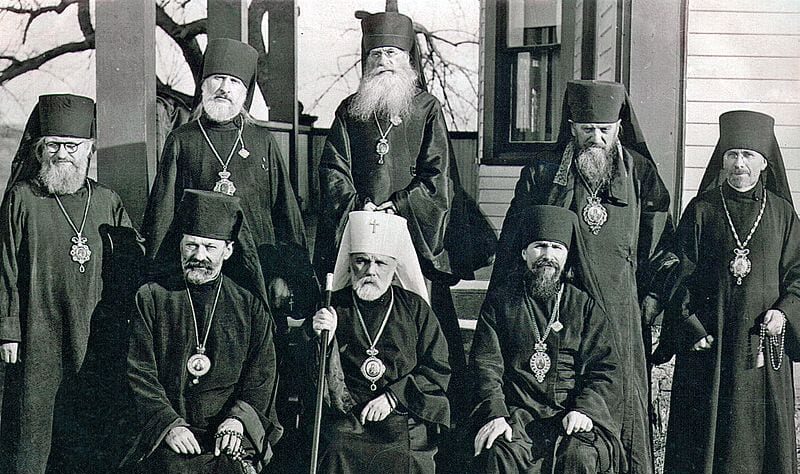
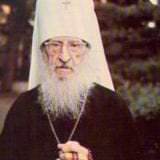
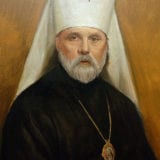
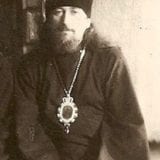
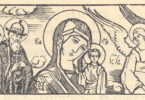
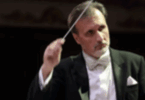
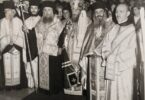


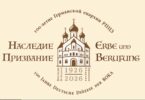
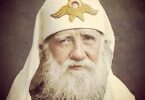
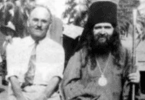
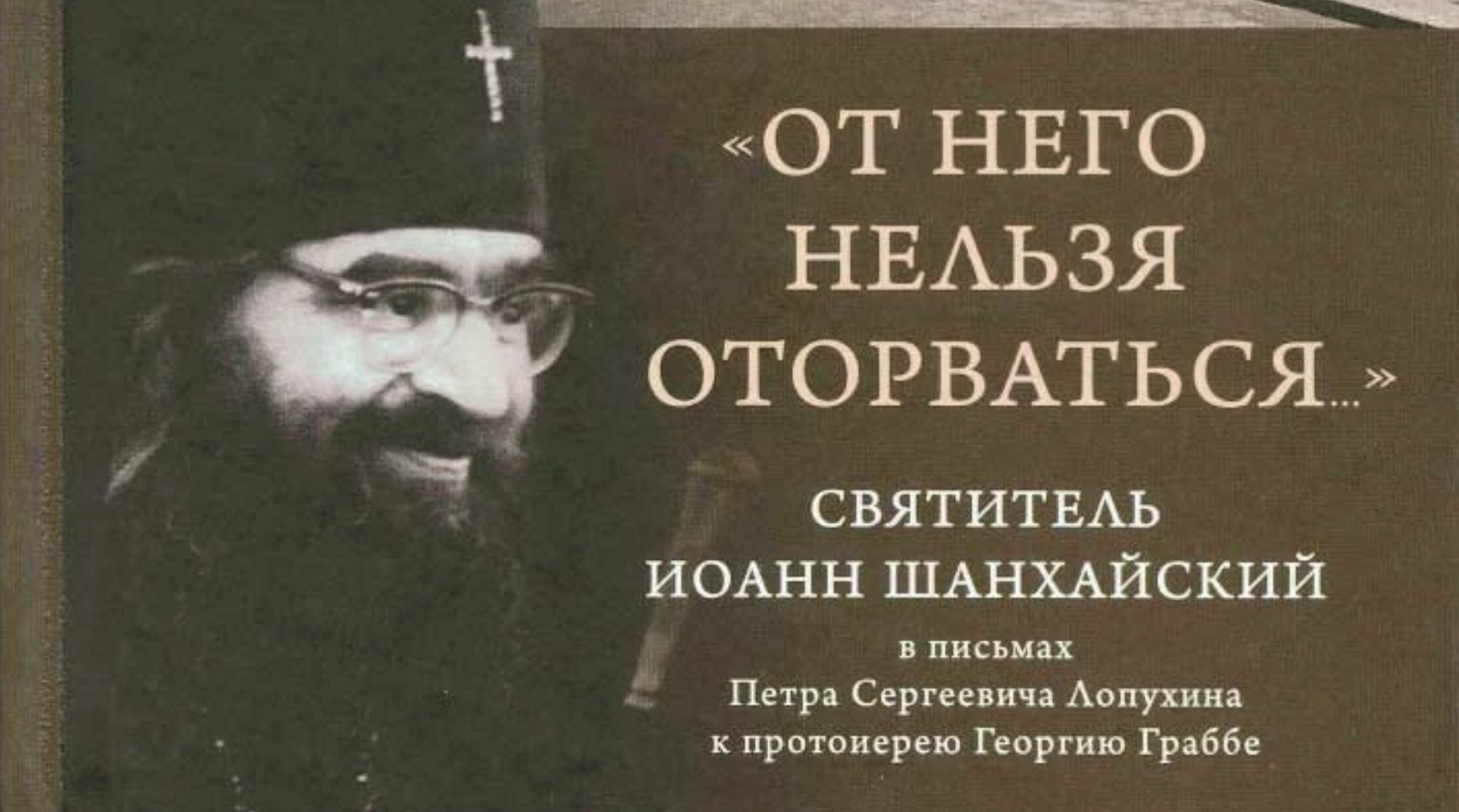

There is a lot to the story of Fr. Theodore Penzenik that I won’t relate here. But the details can explain a bit more and why Vladika Vitaly might have been lenient.
Glad you found this research useful.